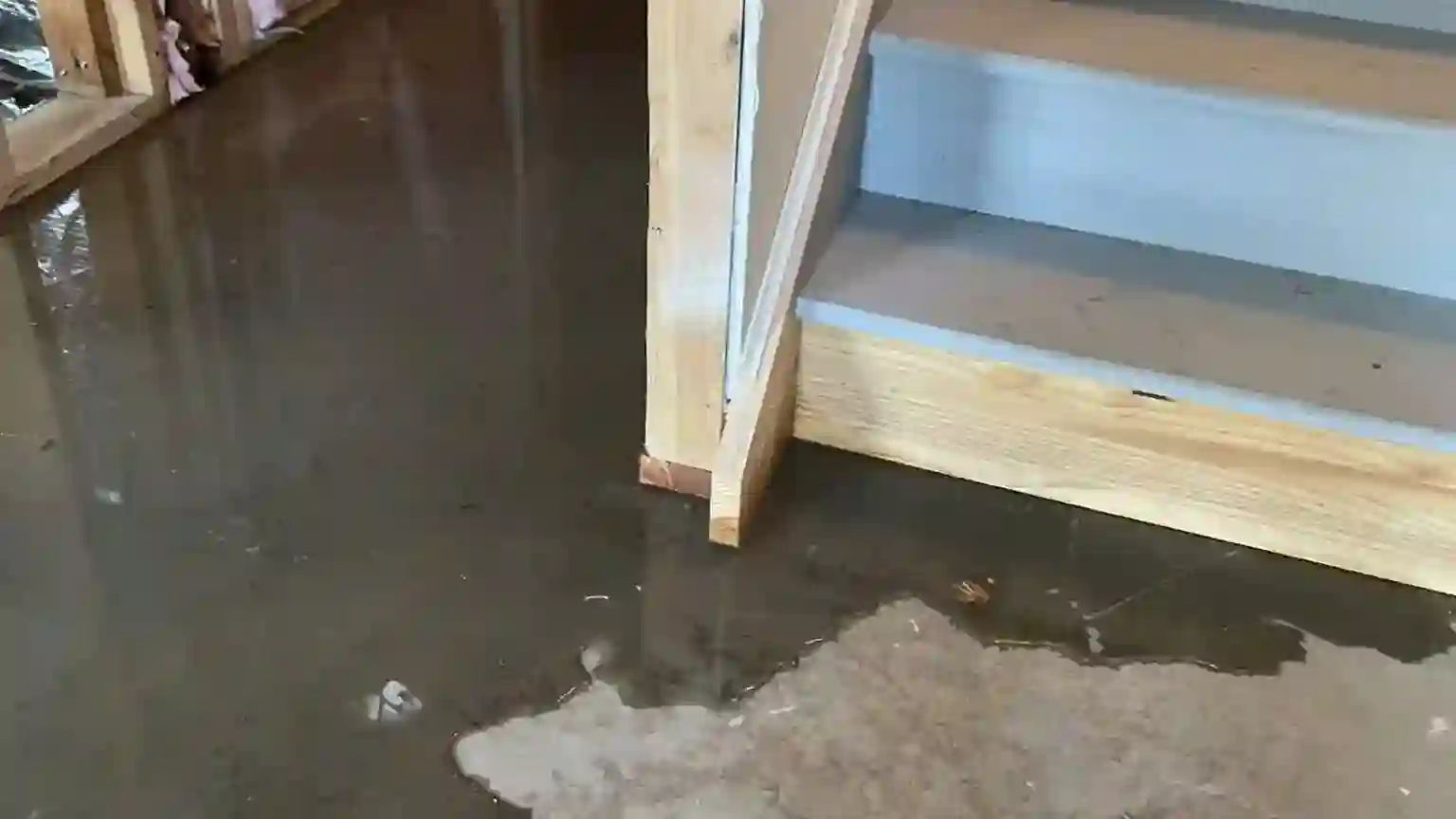
On an ordinary day, a heavy rain storm comes passing through town. You might not think much of it, that is until you go to get something from the basement. Then you find an alarming sight waiting for you. It might be water trickling down your basement wall, or your finished basement’s carpet is suddenly soaked because of leaky crack in the floor. Whatever the scenario, it can be stressful for homeowners to discover that their basement is all wet.
Let’s take a look into the 6 main ways that water can enter your basement, and how this can be prevented!
As the soil becomes saturated, such as during a heavy rain storm, there is a buildup of hydrostatic pressure against the foundation walls and floor. Whether it’s cracks in your basement wall or floor, or your basement cove where the slab meets the foundation wall, these spaces provide water with a path of least resistance. From gravity to hydrostatic pressure, these are the forces that lead to water making its way through your foundation and into your basement.
Hydrostatic pressure is no joke. WaterproofMag.com explains why it’s the reason that water can cause cracks in concrete and penetrate its way into your basement. “This pressure can exert enormous forces. Four feet of water exerts nearly 300 pounds of pressure per square foot of wall. A basement footing with ten feet of saturated soil above it must withstand 600 pounds per square foot.”
With the proper maintenance habits and waterproofing measures in place, you can help make sure that water isn’t left to sit against your foundation to create that enormous hydrostatic pressure. Let’s dive into the ways that you can keep that water away from your basement. So that your basement remains dry, safe, and useable.
There are a variety of measures that you can take to help prevent water from collecting against your home’s foundation. The less water there is lingering against your foundation, the less hydrostatic pressure there is against your basement wall. This means fewer chances of damage or water intrusion. Have a look at these different ways that you can help keep water away from your foundation. The more of these you follow, the better chance you’ll have of enjoying a nice and dry basement for longer…
Your rain gutters are one of your first lines of defense against water damage on your foundation. By guiding rainwater from the roof to the ground, they prevent rainwater from seeping directly into the soil against your foundation and basement. But over time, rain gutters can get clogged with debris. This is why it is important to regularly inspecting and clean your rain gutters. While checking your rain gutters, be sure to tighten any loose extensions or gutter straps, and flush your downspout with a garden hose to make sure everything is clear and secure.
To help further protect your basement and foundation from water damage, consider extending your downspout. Be sure it’s reaching at least five feet away from your house. This will help ensure that rainwater from your roof will be deposited far enough that it doesn’t seep into your surrounding soil. You can also consider installing an underground drainpipe.
The ground around your foundation should be sloping away from your home. Try to aim for having the ground sloping downwards, descending about one inch for every foot away from your home. But you should never have the ground sloping upwards while walking away from the foundation of your home.
From the space around your plumbing pipes to foundation cracks, seal any gaps that can let water in. These openings can allow outside moisture and water to seep into your basement. For some of these gaps, like the space around your plumbing pipes as they pass through your foundation wall, it is possible to seal them yourself. But for foundation cracks, it’s highly recommended that you have a professional foundation repair contractor assist you. They can help inspect that foundation crack and determine if it is a problem and what solution it needs.
If you’re encountering serious groundwater problems, it may be wise to have your basement waterproofed. From the installation of French drains and sump pumps to waterproofing your basement walls, there are a variety of measures that can be used to keep groundwater moving out and away from your home. A waterproofing expert can help determine a personalized solution for your home’s unique situation.
While things like cleaning your rain gutters can be done fairly easily on your own, if you’re not sure about how to do certain things, it may be best to contact a waterproofing expert who can help. With the expertise of a waterproofing contractor, you can make sure that your waterproofing measures are installed and maintained properly. Ensuring a safe and dry basement for years and years.
Since 1958, ’58 Foundations & Waterproofing has been helping keep groundwater out of basements just like yours. Whether it’s repairing a part of the foundation, such as a bowing basement wall, or installing our effective ’58 basement waterproofing system, our experts are there to make sure your home is safe from groundwater intrusion, so that you’re able to make full use of your basement. To achieve the best results, we use quality products including our specially-engineered Channel ’58 drainage channels and our Workhorse sump pump with battery backup options
We have local offices throughout the Eastern Seaboard! Whether you reside near Baltimore, MD, Winston-Salem, NC, or Atlanta, GA, there’s a ’58 team of basement waterproofing experts ready to help!
Contact us today to schedule for a free basement waterproofing inspection and to receive a detailed price quote. With our basement waterproofing expertise, you can rest easy knowing that your basement will be kept safe, dry, and healthy!
Sources:
Relieving Hydrostatic Pressure
https:/www.waterproofmag.com/2015/10/relieving-hydrostatic-pressure/






We respect your privacy. By submitting, you authorize '58 Foundations and Waterproofing to reach you via call, email or text for information about your project needs. We will never share your personal information with third parties for marketing purposes. You can opt out at any time. Message/data rates may apply. Consent is not a condition of purchase. Privacy Policy